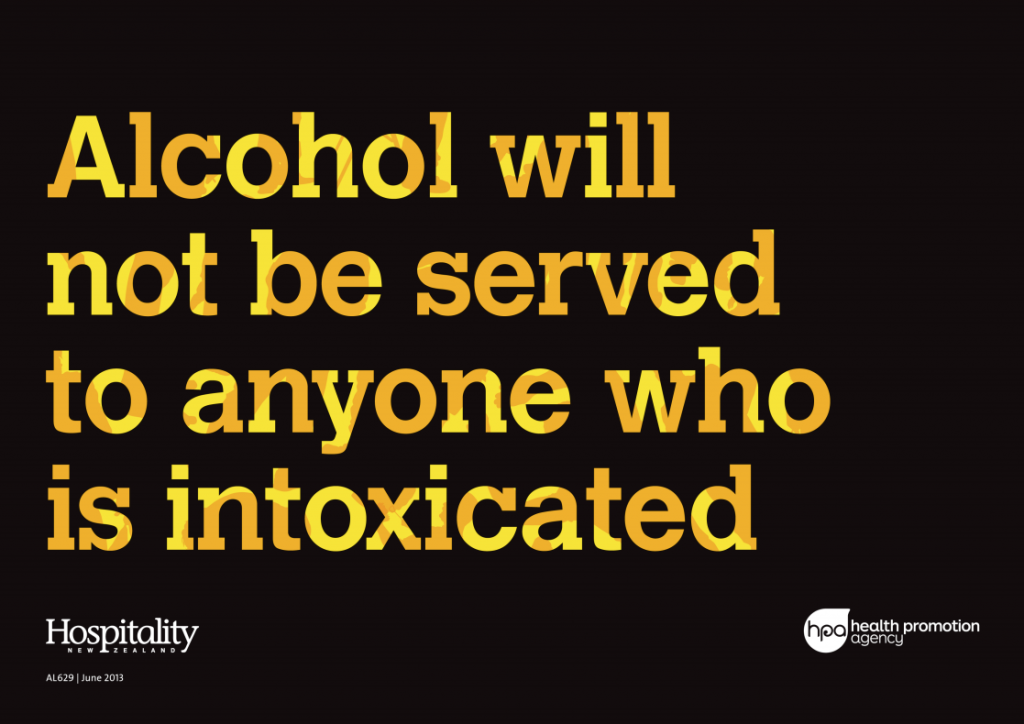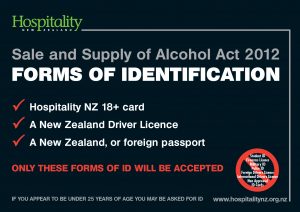经理证书
2012 年《酒类销售和供应法》的一项要求是,在向公众出售或供应酒精时,值班经理应在任何时候负责合规。值班经理的证书授权持有人管理任何持有执照的房舍。
申请的要求
最低年龄要求为 20 岁。
• 在酒店、杂货店或酒类行业的持牌场所拥有六个月的经验。
• 获得批准的课程提供商的许可控制员资格。
• 带照片的身份证件(护照、汉兹 18 岁以上、驾驶执照)。
• 当前雇主的参考资料:培训、经验和品格。
• 由新西兰移民局签发的工作签证(如果适用)。
第一份证书的签发期限为 12 个月;续签证书的期限为三年。
申请经理证书
要申请经理证书,您必须拥有许可证控制人资格(LCQ),其中涉及新西兰资格管理局的单位标准 4646 和 16705。
请向理事会询问你可以在哪里报名参加 LCQ 培训
课程完成后,您可以向我们发送申请。申请文件可以向理事会索取。
申请经理证书后会发生什么?
所有申请都发送给警方和许可证检查员。许可检查员可能会联系您进行简短的面试。
如果没有异议,将颁发证书。如果反对,您的申请可能会在公开听证会上听取,并将涉及当地议会的许可委员会。
一旦签发证书,该证书的有效期为一年,然后提出续期申请。
续签经理证书
向理事会存档记录的管理人员将在证书到期前不少于一个月向其发送续期申请。它将发送到我们目前存档的邮政地址。作为续订申请的一部分,包括一份调查问卷,以测试您对 2012 年《酒类销售和供应法》的了解。必须正确完成此操作才能开始处理您的申请。
如果您持有 1989 年《酒类销售法》规定的许可证管理员资格(LCQ),并且尚未完成并提供过渡性测试证书,那么您将需要参加新的 LCQ 课程,概述与 2012 年《酒类销售和供应法》相关的单位。
重要的是让我们知道您的地址是否在续订之间发生变化,以便您及时收到信息。
证书持有人有责任确保在到期日之前提出续期申请。如果你的证书在提出续期申请之前到期,那么你的证书不再有效,必须申请新经理证书。
新证书的有效期为一年。在续期时,如果没有反对意见,证书将续期三年。
任命临时或代理经理
代理经理
当值班管理人员生病、缺勤或年假时,可任命一名代理管理人员,同时休年假不超过三个星期,在 12 个月期间内最多不超过六个星期。此人没有必要申请经理证书。如果预约时间超过 48 小时,您必须在开始日期之前以书面形式与理事会联系,或填写下面的在线申请表。
开、关和俱乐部许可
2012 年《酒类销售和供应法》的目的不是限制酒类的销售和供应,而是促进安全和合法的饮酒。
要出售酒精,您必须确保拥有正确的酒类许可证。
在许可证上
在许可证允许出售或供应酒精供应在你的场所消费。
出售或供应酒类需要持有许可证的场所的例子包括:
• 餐厅(包括 BYO)
• 小酒馆、酒吧或酒吧
• 夜总会
• 酒店
• 电影院或剧院
• 功能中心
• 运输工具,例如船、公共汽车、飞机或火车。
不得将酒精从房屋中移除。
关闭许可证
非许可证允许持有人出售或供应酒精以在持牌场所外使用。
出售或供应酒类需要持有许可证的场所的例子包括:
• 超市
• 瓶子商店
• 杂货店
• 移除销售场所(在线订单)
• 啤酒厂
• 酒厂。
根据 2012 年《酒类销售和供应法》,乳品厂、加油站和便利店不得出售酒精。
超市和杂货店只能向公众出售啤酒和葡萄酒。
必须在场所外消耗酒精。
俱乐部许可
俱乐部许可证允许俱乐部出售或供应酒精供在场所内消费:
• 会员
• 会员陪伴客人
• 拥有互惠访问权的其他俱乐部的成员。
俱乐部执照持有者必须确保在房舍开放供销售和供应酒类时,俱乐部不出售或供应的任何酒精不会被消费。
俱乐部执照持有人必须采取一切可行的步骤,以确保在任何时候都有一位指定俱乐部秘书。秘书的任何变更必须在预约后 10 天内通知我们的许可检查员。
出售酒精的任何利润都必须属于俱乐部。
如何申请
理事会有你可以填写的申请表。要获得最佳套房的申请,请致电议会并向许可部门申请。
计算费用
酒类许可证费由政府在国家一级确定。
需要注意的重要细节是:
• 年费应在您的住所许可证的周年纪念日支付。
• 房舍许可证基于基于成本/风险的酒类许可证费用办法。
请使用下表计算房地的加权金额,然后使用该表来确定您的场所适合的风险类别。计算完成后,请参阅酒类许可证费用。
定义
1 级餐厅 —— 具有重要独立酒吧区的餐厅,相关的 TA 认为,在酒馆性质上,每周至少一晚经营该酒吧,例如在酒吧区的餐桌上供应不吃饭的酒吧。
2 级餐厅 —— 有独立酒吧(可能包括一个小酒吧区)的餐厅,但相关的 TA 认为,这些餐厅在任何时候都不属于酒馆的性质经营该区域。
3 级餐厅 —— 只向餐桌供应酒精且没有单独酒吧区的餐厅。
1 级俱乐部 —— 电讯局长认为,这些俱乐部是大型俱乐部(拥有 1000 名或更多购买年龄成员),并且相关的助理人员认为,这些俱乐部具有小酒馆的性质(例如大型男性俱乐部、合并俱乐部或大型 “cossie” 俱乐部)。
2 级俱乐部 — 不符合 1 级或 3 级定义的俱乐部(例如较大的体育俱乐部、中型登记册管理人、许多省级社交俱乐部)。
3 级俱乐部- 电讯局长认为,这些俱乐部是小型俱乐部(购买年龄成员少于 250 名),每周经营酒吧 40 小时或更短(例如,小型体育俱乐部,如保龄球俱乐部、高尔夫俱乐部、桥梁俱乐部和小型 RSA)。
强制执行 —— 与该法第 288 条规定的 “持有” 具有相同的含义,或者如果犯罪发生在 2013 年 12 月 18 日之前,可能已发出扣押的先前犯罪。
费用类别
许可证制度有五个费用类别,反映了成本/风险评级的范围。
[table id=10/hongi_shortcode_end>2019 年 7 月 1 日至 2020 年 6 月 30 日将收取 2019/20 年度的费用和收费。除另有说明外,所有费用均包括消费税。
[table id=11/hongi_shortcode_end>酒精场所展示标牌
应在所有持牌场所中展示以下标牌。




















































